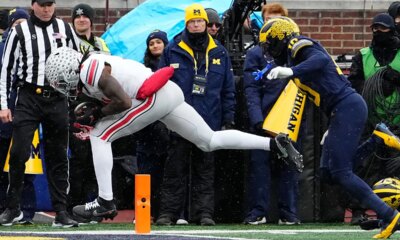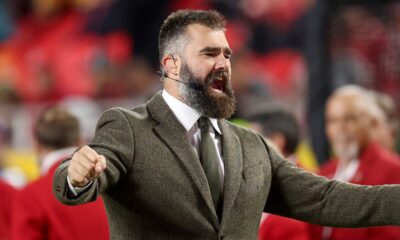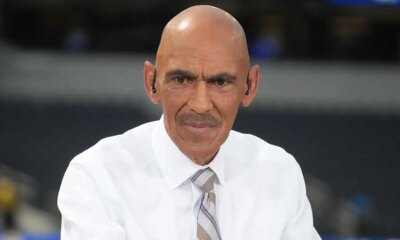Sports
Czech tennis star says ex-boyfriend in US Open crowd startled her during match
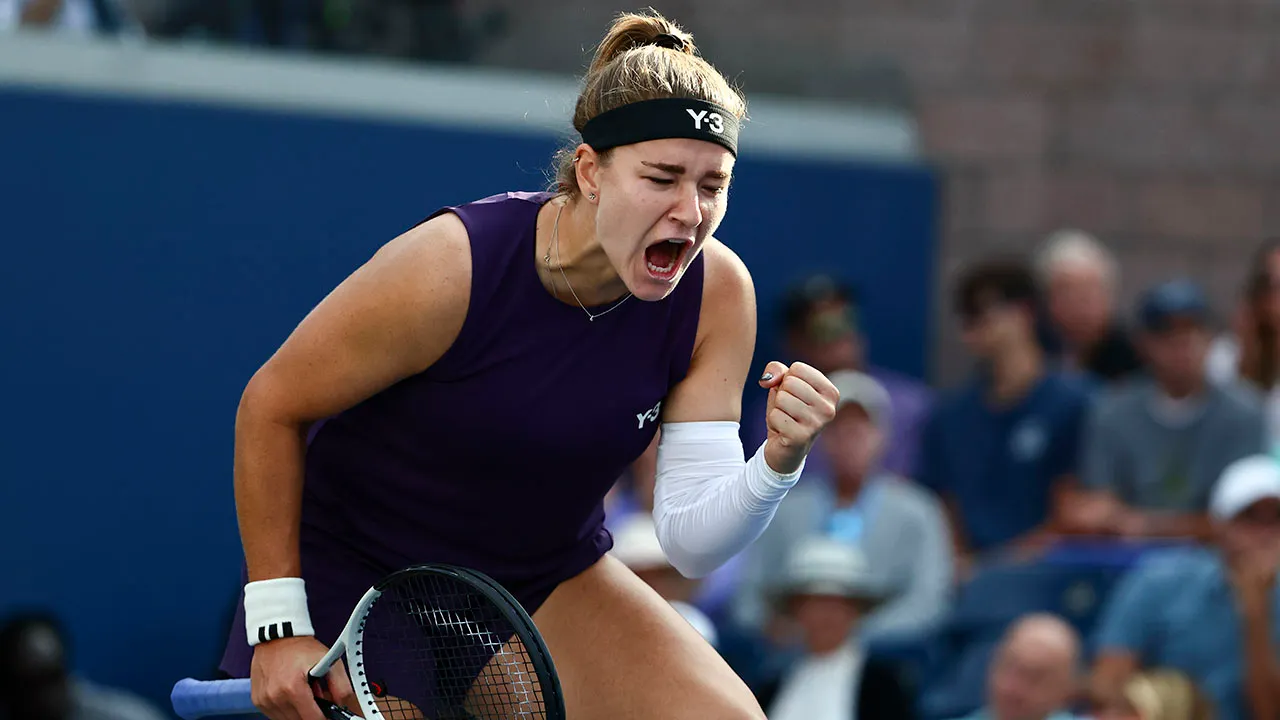
NEWYou can now listen to Fox News articles!
Czech tennis star Karolina Muchova needed to rally against her Romanian opponent, Sorana Cîrstea in the second round of the U.S. Open.
Muchova was down 4-1 in the second set on Thursday when she needed to briefly halt the match. She began to get emotional and admitted after the match it was because she saw her ex-boyfriend sitting in the crowd.
CLICK HERE FOR MORE SPORTS COVERAGE ON FOXNEWS.COM
Karolina Muchova, of the Czech Republic, reacts after defeating Soraya Cirstea, of Romania, during the second round of the U.S. Open tennis championships, Thursday, Aug. 28, 2025, in New York. (AP Photo/Andres Kudacki)
She rallied to defeat Cîrstea in three sets.
“Well… it wasn’t tennis-related,” she told reporters after the match, via The Athletic. “So l don’t really like talking about it. But opposite my bench, my ex-boyfriend sat down. He sometimes shows up at places where he shouldn’t be. That startled me a bit. I told him to leave, he didn’t, but later he did go. It was hard to focus in that moment.”
Muchova hadn’t mentioned the man to the Women’s Tennis Association (WTA) or the United States Tennis Association (USTA) before the tournament began and hasn’t done so after Thursday’s incident, The Athletic reported.
Tennis players can request certain spectators to be blacklisted from ticket sales or being able to receive credentials. An alleged stalker of Emma Raducanu appeared at the Dubai Tennis Championships in February. The man was blacklisted from purchasing tickets for Wimbledon.
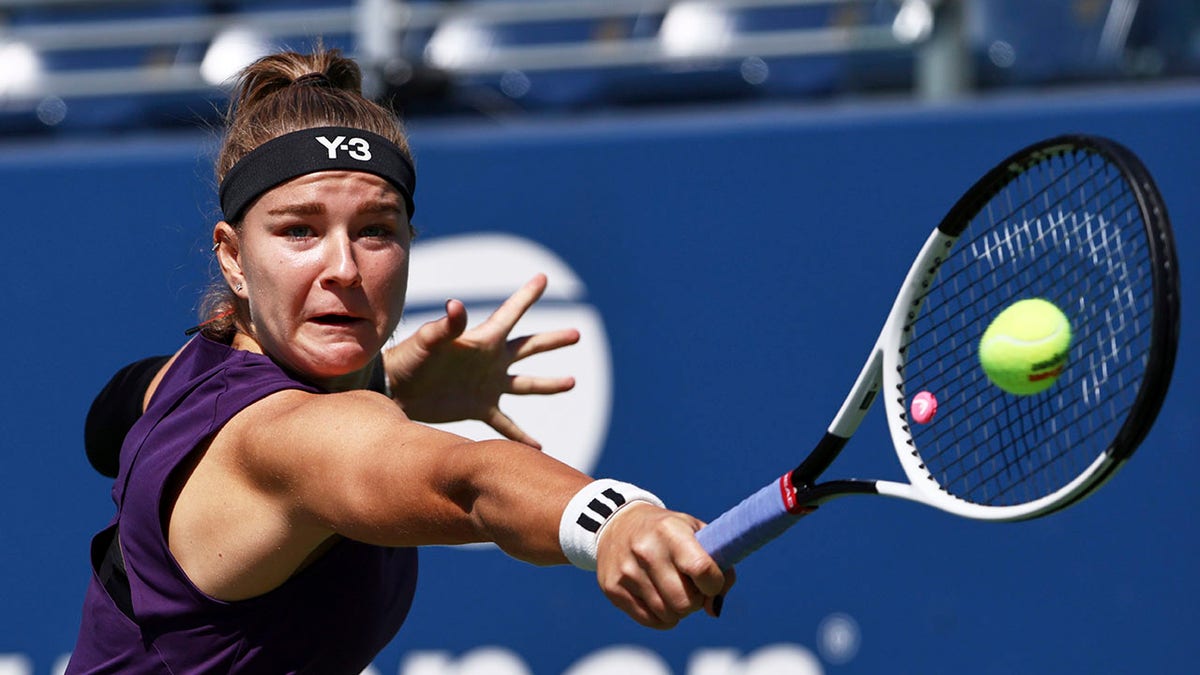
Karolina Muchova, of the Czech Republic, returns a shot during the third round of the U.S. Open tennis championships, Saturday, Aug. 30, 2025, in New York. (AP Photo/Andres Kudacki)
US OPEN SPECTATOR PROPOSES TO GIRLFRIEND DURING ARYNA SABALENKA’S WIN OVER LEYLAH FERNANDEZ
Muchova said Saturday after moving on to the round of 16 that she was doing well and didn’t report the person to tennis officials.
“Player safety is a critical element of our planning and execution for the U.S. Open,” a USTA spokesperson told the outlet. “Our comprehensive security plan includes protocols and procedures for effective risk mitigation and issue management. We work closely with the ATP, WTA, ITF, ITIA and the other Grand Slam events to stay informed of all relevant situations and concerns.
“The U.S. Open is in constant communication with local and federal law enforcement, who also maintain a presence at the USTA Billie Jean King National Tennis Center. We utilize both physical and technological means throughout the event to monitor and maintain security, including online threats to players.”
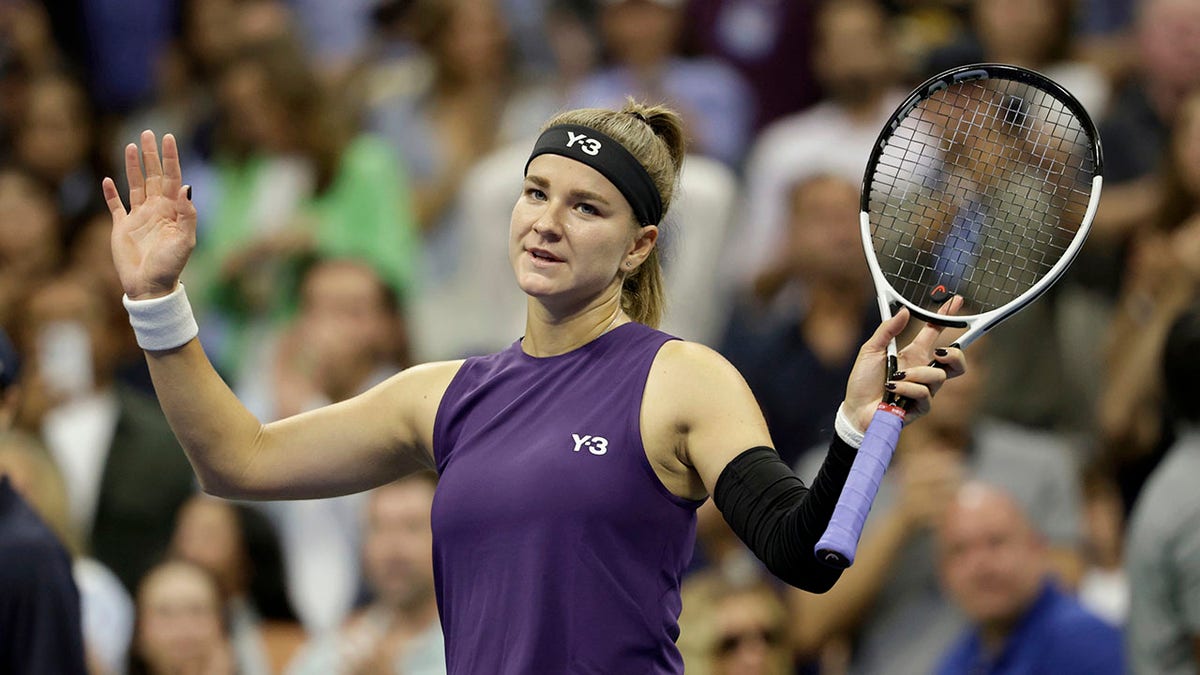
Karolina Muchova, of the Czech Republic, reacts after defeating Venus Williams, of the United States, during the first round of the U.S. Open tennis championships, Monday, Aug. 25, 2025, in New York. (AP Photo/Adam Hunger)
CLICK HERE TO GET THE FOX NEWS APP
Muchova went as far as the semifinals at the U.S. Open two years in a row. She was ranked No. 13 going into the tournament.
Follow Fox News Digital’s sports coverage on X and subscribe to the Fox News Sports Huddle newsletter.
Sports
Flamengo’s Copa Libertadores trophy damaged in title celebrations

The Copa Libertadores trophy won by Flamengo on Saturday was damaged during the team’s title celebrations.
Flamengo beat Palmeiras 1-0 in the final in Lima, Peru, to become the first Brazilian club to lift the prestigious cup four times.
Flamengo players and staff had a victory parade on the streets of Rio de Janeiro on Sunday afternoon, with an estimated 500,000 people joining in the celebrations.
Players and staff took turns to lift the cup during the parade and images showed that the top part of the trophy, which consists of a figurine of a footballer ready to kick a ball, was wrapped in what appeared to be masking tape.
– Flamengo lift Copa Libertadores, but Brazil’s players look exhausted
The figurine had earlier been broken.
Flamengo will be hoping to wrap up the Brazilian league title on Wednesday when they take on Ceara in front of their own fans in Rio’s Maracana stadium.
They are five points clear of Palmeiras at the top of the standings with two games remaining.
Sports
England’s Moeen Ali announces return to PSL after four-year hiatus
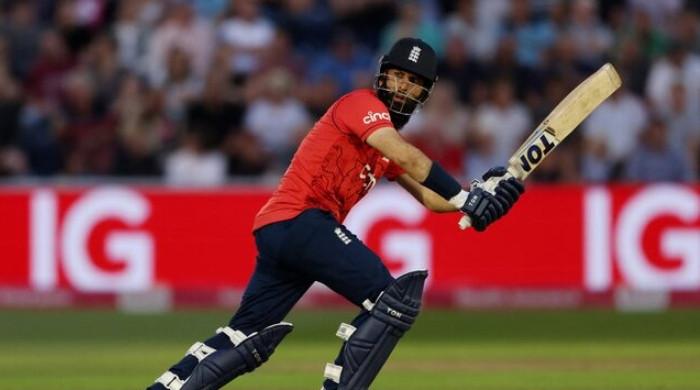
Former England cricketer Moeen Ali has announced his return to the Pakistan Super League (PSL), saying he was excited to be part of the league’s “new era”.
After the 10th edition of the PSL earlier this year, the league is set for an expansion to eight teams, with the addition of two new franchises.
Meanwhile, Moeen, who has previously featured in the marquee league when he represented former champions Multan Sultans in the 2020 and 2021 editions, expressed his eagerness to rejoin the league.
Moeen stated that the PSL, since its advent in 2016, has “earned a reputation for top-level T20 cricket”, featuring close competition and talented players.
“I’m really excited to be joining HBL PSL in its New Era. The league has earned a reputation for top-level T20 cricket, with high-quality competition and world-class talent across every team,” Moeen wrote on Instagram.
The 38-year-old, who represented England in 68 Tests, 138 ODIs and 92 T20Is during his illustrious career, was also a part of the Three Lions squad that made its historic tour of Pakistan in 2022 to play a three-match Test series. Besides that, Moeen has made several visits to the country.
Reflecting on his previous experiences in Pakistan, Moeen said that he enjoyed playing in the country and specifically praised the enthusiastic crowd, which he said pushes players to give their best on the field.
“Playing in Pakistan is always incredible; quality of cricket is outstanding and the passion and intensity from the crowd push you to bring your best,” he continued.
“I’m looking forward to being part of it all and creating some great memories along the way. Ready for another special experience Insha’Allah!”
His announcement comes just days after former South African captain Faf du Plessis pulled out of the Indian Premier League (IPL) to play in the upcoming PSL season.
In a post on Instagram on November 29, the renowned cricketer said that he would not put his name in the IPL auction this year.
“It’s a big decision, and one that comes with a lot of gratitude when I look back,” he wrote in his post.
Sports
Treylon Burks made one jaw-dropping play. That matters for the Commanders.
The receiver has been plagued by injuries, but Sunday night against the Broncos, he gave Washington something to talk about other than a seventh straight loss.
Source link
-

 Sports1 week ago
Sports1 week agoWATCH: Ronaldo scores spectacular bicycle kick
-

 Entertainment1 week ago
Entertainment1 week agoWelcome to Derry’ episode 5 delivers shocking twist
-

 Politics1 week ago
Politics1 week agoWashington and Kyiv Stress Any Peace Deal Must Fully Respect Ukraine’s Sovereignty
-

 Business1 week ago
Business1 week agoKey economic data and trends that will shape Rachel Reeves’ Budget
-

 Politics1 week ago
Politics1 week ago53,000 Sikhs vote in Ottawa Khalistan Referendum amid Carney-Modi trade talks scrutiny
-

 Tech6 days ago
Tech6 days agoWake Up—the Best Black Friday Mattress Sales Are Here
-

 Tech1 day ago
Tech1 day agoGet Your Steps In From Your Home Office With This Walking Pad—On Sale This Week
-

 Fashion1 week ago
Fashion1 week agoCanada’s Lululemon unveils team Canada kit for Milano Cortina 2026




